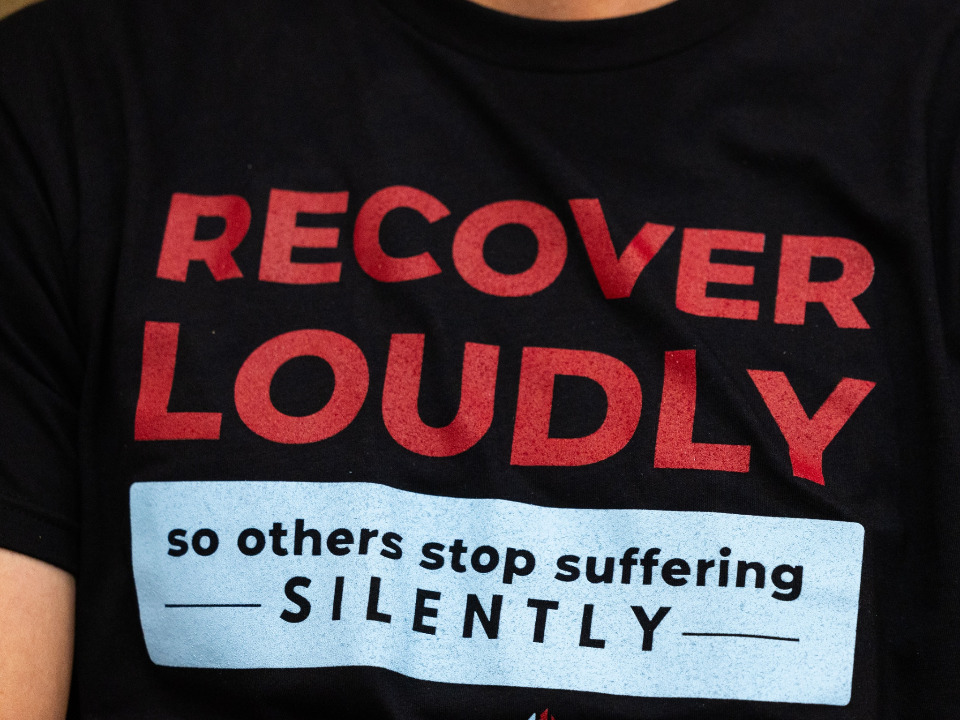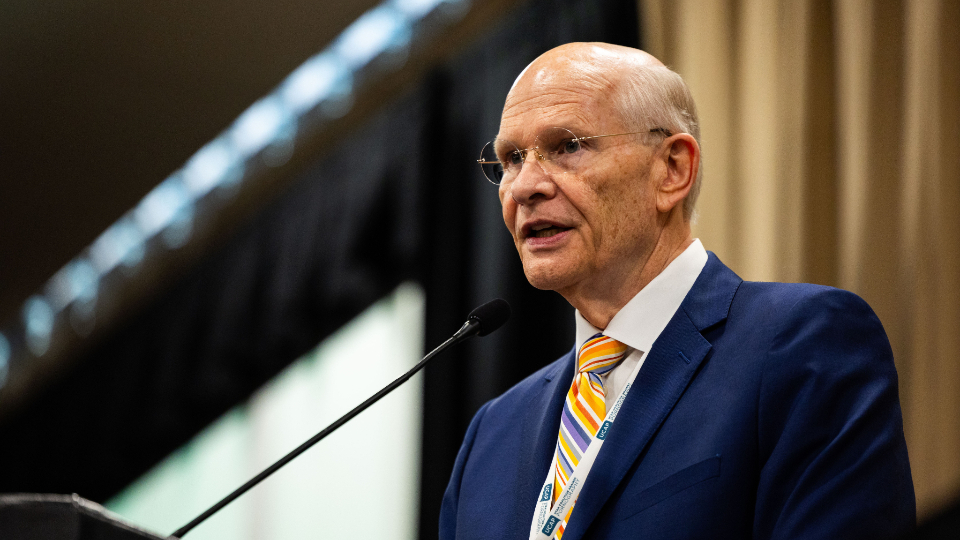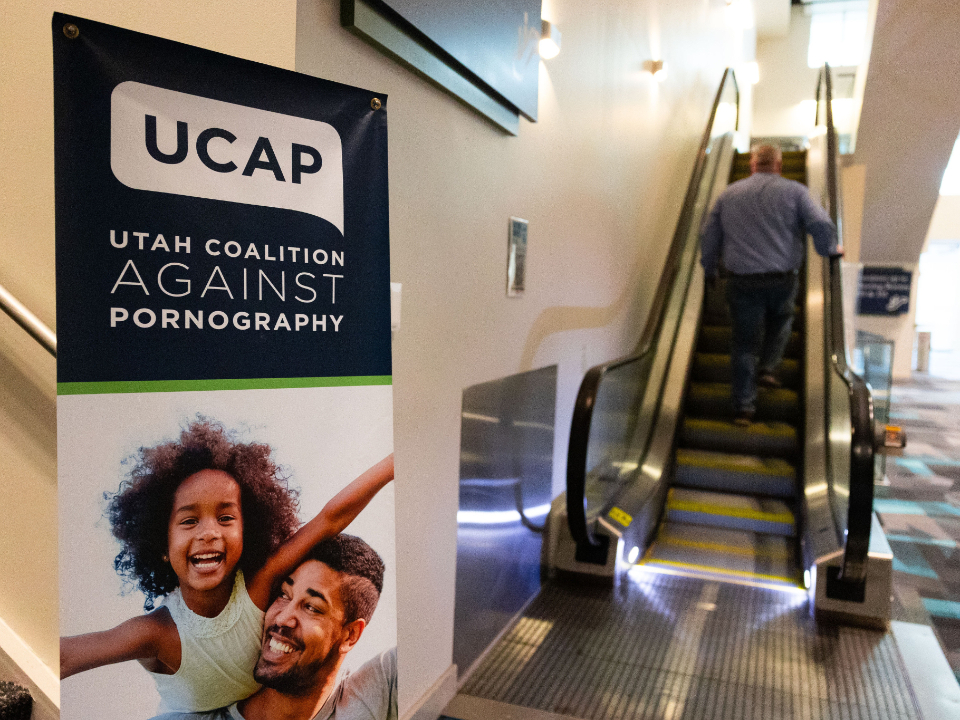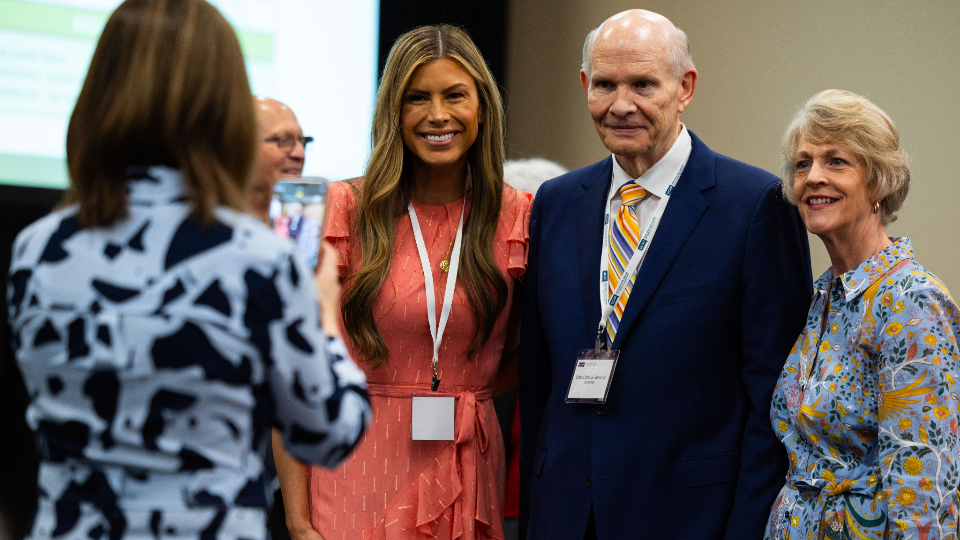
This story appears here courtesy of TheChurchNews.com. It is not for use by other media.
By Kaitlyn Bancroft, Church News
Deanna Lambson once heard the story of a boy who left his socks on the ground. His mother, in a frustrated moment, became angry at him for not picking up after himself.
Later on, the boy was hesitant to tell his mother about his habitual pornography use. His mother had done everything right, Lambson said — lovingly letting him know that he could talk to her about anything and she would get him help for whatever problems he faced.
Still, he hesitated. And it was because of the socks.
Lambson related that the boy said, “[My mom] got so angry about the socks that I thought, ‘If she’s this mad about the socks, I cannot tell her about this other thing.’”
Lambson is the founder of White Ribbon Week, a nonprofit that gives kids tools to stay safe online. She shared the sock story during the 2024 Utah Coalition Against Pornography Conference on Saturday, May 4, in Salt Lake City.
Elder Dale G. Renlund of the Quorum of the Twelve Apostles was the event’s opening keynote speaker.
“My church, The Church of Jesus Christ of Latter-day Saints, and I condemn pornography in any form,” Elder Renlund said during his address. “It damages individuals, families and societies. It draws us away from God and impairs our ability to feel the influence of the Holy Spirit. Because all forms of pornographic material are unhealthy, opposition to its production, dissemination and use is warranted.”
But he testified of Jesus Christ’s power to heal those ensnared by pornography. The Savior offers hope to the seemingly hopeless and help to those who feel lost, Elder Renlund said.
“As I have come to know Him, I’ve learned that He loves to heal wounds you cannot heal, to fix things that are irreparably broken and compensate for any unfairness you have experienced. And He absolutely loves to permanently mend even shattered hearts.”

helping-children-pornography-2.JPG
Elder Dale G. Renlund of the Quorum of the Twelve Apostles of The Church of Jesus Christ of Latter-day Saints speaks during the Utah Coalition Against Pornography conference at the Salt Palace Convention Center in Salt Lake City on Saturday, May 4, 2024. Photo by Megan Nielsen, courtesy of Church News.Copyright 2024 Deseret News Publishing Company.Reacting When a Child Says They’ve Made a Mistake
During Lambson’s Utah Coalition Against Pornography Conference session, titled “Mistakes Come and Go but You Matter,” she discussed how to respond when a child admits to a mistake, whether it’s something small like breaking a toy or something more serious like viewing pornography.
Her intention in sharing the sock story wasn’t to make anyone feel guilty about times they weren’t patient with their kids; rather, she wanted parents to think about how to enforce expectations at home without making children feel that their parents’ love is conditional upon their behavior.
“For some reason, when we make a mistake or our kids make a mistake, there’s an immediate judgment, either a self judgment or a judgment of them,” Lambson said. But “it has been proven over and over that when kids make mistakes and they’re met with loving support … they grow so much faster.”
Lambson also compared unhealthy and healthy belief systems. The former centers around thoughts like “I’m no longer lovable” and “There’s nothing I can do to solve this”; but the latter promotes thoughts like “It’s OK to feel sad” and “I’ll make a different choice next time.”
Reacting negatively and rushing to punish a child for their mistakes tends to promote the unhealthy belief system, Lambson said. Additionally, punishment never brings connection.
That doesn’t mean parents shouldn’t have boundaries, expectations and consequences, she clarified. “But punishment for the sake of punishment expresses all those things that we saw… in the [unhealthy] belief system. ‘I’m unlovable.’ ‘I can’t handle this on my own.’ ‘I’m a bad person.’”
Conversely, reacting with love and openness will help a child feel safe to continue sharing with their parents, Lambson said.
A wise friend once gave her some advice, she said. How should a parent react when they learn their child has made a mistake and now needs support? “You breathe,” the friend told Lambson.
Taking a moment to simply breathe after a child shares news that could be shocking or distressing helps a parent respond better, Lambson said. She especially encouraged parents to sit in whatever discomfort their child is experiencing due to their mistake.
“A lot of the behaviors or the mistakes that we might make are an attempt to cope with something. It is a symptom of something else going on,” she said, adding, “If we’ve made a mistake, can we sit with ourselves compassionately through the consequences of that decision? That is something that really builds resilience.”
Allowing kids to talk about their feelings will also go a long way towards helping them manage their emotions, Lambson said. So will making plans and setting goals; even if the child doesn’t follow through with the plan, the act of simply defining intentions often makes them feel better, she continued.
Building trust with a child starts with little things, Lambson said, like being more forgiving of a broken toy.
“Every child needs to feel that mistakes are normal. … They need to have the resilience to know that they can get through this and they need to have loving support,” Lambson said. “You have a choice of how you’re going to respond. You can let this thing destroy you, or you can let it guide you towards a more purposeful decision.”

helping-children-pornography-3.JPG
A sign for the Utah Coalition Against Pornography is pictured at the group's conference at the Salt Palace Convention Center in Salt Lake City on Saturday, May 4, 2024. Photo by Megan Nielsen, courtesy of Church News.Copyright 2024 Deseret News Publishing Company.Protecting Children From Cyberbullying and Sextortion
Lambson wasn’t the only presenter at the Utah Coalition Against Pornography Conference who discussed how to handle tough conversations with children. Lizeth Hernandez, a licensed clinical social worker, held a session titled, “How to Help Parents Keep Adolescents Safe.”
She focused specifically on the dangers of cyberbullying and sextortion.
Hernandez said cyberbullying occurs when teens distribute embarrassing or inappropriate images and videos of other students among themselves. Artificial intelligence has complicated this issue, because now people can easily generate images or videos that look real but aren’t. Teachers are sometimes victims of cyberbullying, too, Hernandez said.
Signs that a teen may be a victim of cyberbullying include withdrawing from friends and family, lying and lack of impulse control, she said.
Hernandez said sextortion occurs when a predator targets a teen online, grooms the teen into turning over explicit images of themselves and then demands money from the teen in exchange for not distributing the images.
Sextortion often starts with a predator messaging a teenager with compliments, often related to things the teen has posted online, Hernandez said. “You’re so good at sports,” for example, or, “You’re so pretty.” Sometimes the predator pretends to work for a modeling agency, and the interactions might progress to the predator sending gifts or money to the teen.
After the initial grooming occurs, the predator will then begin discussing inappropriate topics with the teen, Hernandez said. They’ll also often try to isolate the teen from family and friends, saying that only they (the predator) understands the teen.
This process tends to happen quickly, Hernandez said, over a matter of weeks. Before long, the predator is asking the teen for revealing photos. And that’s when the blackmail begins.
“That’s where it gets really scary for a lot of adolescents. … They feel alone and isolated,” Hernandez said.
Warning signs that a teen might be the victim of a sextortion scheme include the teen receiving calls and texts from unknown numbers; the teen having items that their parents never bought for them; and the teen withdrawing from family and friends.
Hernandez said preventing both cyberbullying and sextortion occurs through open, meaningful communication between parents and teens. Parents are sometimes concerned that discussing these topics will give their kids bad ideas; but “these discussions are already happening in school. These ideas are already there,” she said.
Open-ended questions like “What do you know about sextortion?” or “Have you ever heard of cyberbullying?” can lead to good conversations, Hernandez said.
It’s also important that kids have other trusted adults in their lives beside their parents, she said. Kids don’t always want to talk to mom or dad, but they might confide in a good teacher, religious leader or other mentor.
Teaching good online habits (like not chatting with strangers) and setting clear expectations (like when the child can and can’t use a device) are also important, Hernandez said. “All of that helps them start building that emotional regulation.”
Finally, while using parental controls on devices matters, Hernandez said she’s worked with many teens who know how to get around those settings. A more effective solution is helping teens learn how to filter themselves, she said.
“It’s important to have internal boundaries,” Hernandez said. She added, “So if we can help our adolescents set those boundaries, it’s easier to catch themselves as they’re trying to use social media in a healthy way.”

helping-children-pornography-4.JPG
From left, Corrine Stokoe smiles for a photo with Elder Dale G. Renlund of the Quorum of the Twelve Apostles of The Church of Jesus Christ of Latter-day Saints and his wife, Sister Ruth L. Renlund, during the Utah Coalition Against Pornography conference at the Salt Palace Convention Center in Salt Lake City on Saturday, May 4, 2024. Photo by Megan Nielsen, courtesy of Church News.Copyright 2024 Deseret News Publishing Company.Copyright 2024 Deseret News Publishing Company.